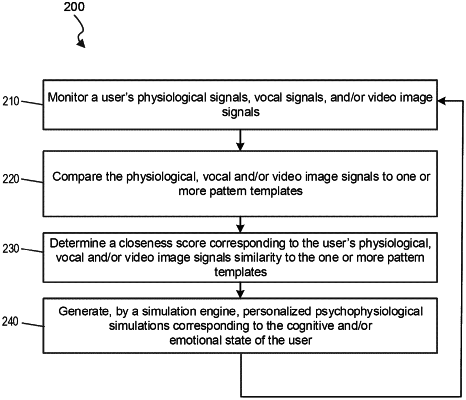| CPC G06F 3/011 (2013.01) [G06F 3/015 (2013.01); G06F 2203/011 (2013.01)] | 15 Claims |

|
1. A biocybernetic de-escalation training system comprising:
a plurality of electronic devices associated with a user, wherein each electronic device of the plurality of electronic devices generate a signal associated with a physiological response of the user;
a computing device comprising:
at least one processor; and
a non-transitory memory storing computer-executable instructions that, when executed by the at least one processor, cause the computing device to:
receive from at least one electronic device of the plurality of electronic devices, a first signal associated with a first physiological response of the user;
identify, based on the first signal, a first physiological pattern associated with the first physiological response of the user;
determine, based on a comparison of a first pattern template to the first physiological pattern, a closeness score; and
cause, based on the closeness score, presentation of an electronic representation of a psychophysiological stimuli via a virtualized environment; and
an augmented reality computing system and wherein presentation of an electronic representation of a psychophysiological stimuli via a virtualized environment comprises generating a simulation of one or more simulated individuals with which the user interacts in the virtualized environment,
wherein the simulation of the one or more simulated individuals with which the user interacts is modified based on the user's physiological response to the simulation,
wherein the closeness score comprises a value indicative of a proximity of a user's actual moment-to-moment physiological and voice activity to a desirable pattern or an undesirable pattern,
wherein behavior of the one or more simulated individuals is modified to a first type of behavior based on the closeness score indicating the desirable pattern, and is modified to a second type of behavior based on the closeness score indicating the undesirable pattern.
|